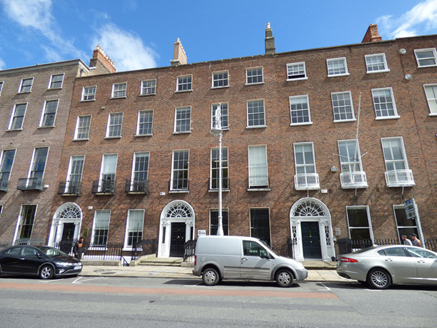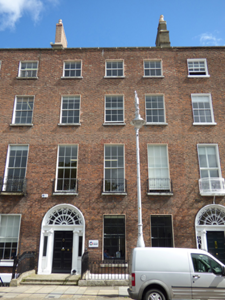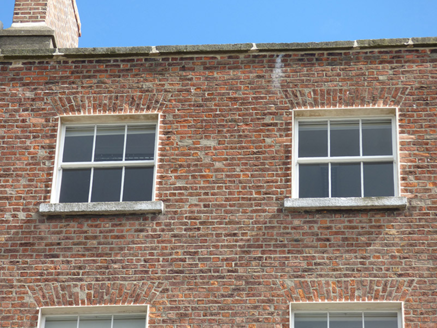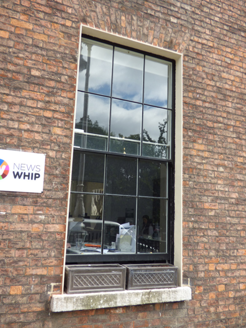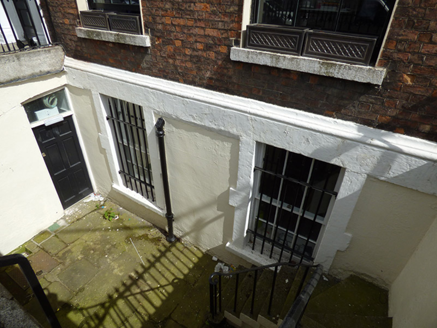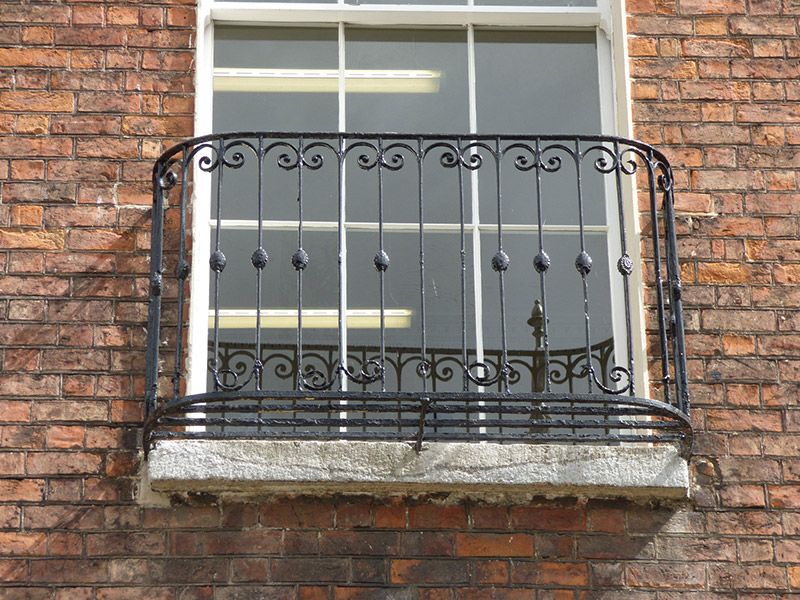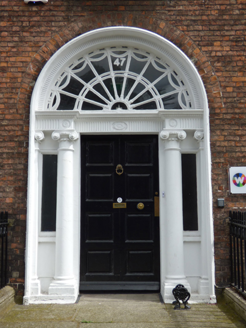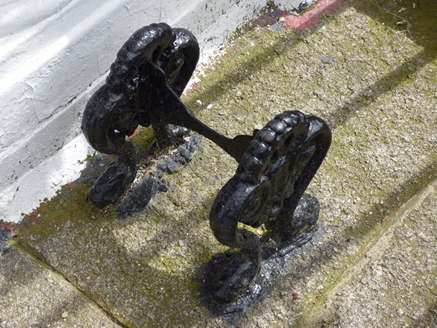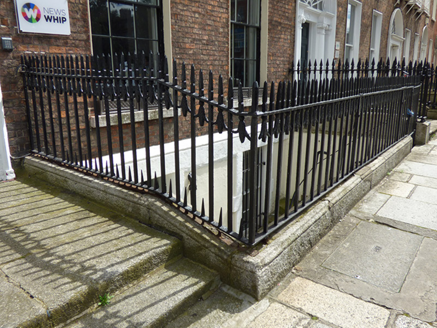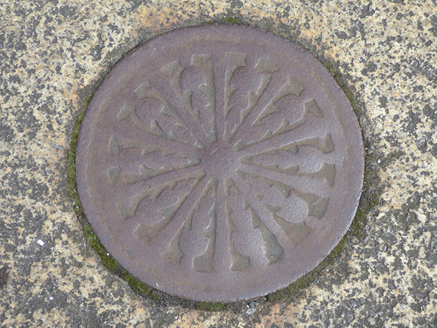Survey Data
Reg No
50100512
Rating
Regional
Categories of Special Interest
Architectural, Artistic
Original Use
House
In Use As
Office
Date
1785 - 1795
Coordinates
316811, 233438
Date Recorded
28/07/2016
Date Updated
--/--/--
Description
Attached three-bay four-storey former house over basement, built c. 1790 as one of three (Nos. 46-48), having series of two-storey returns to rear with hipped slate roofs. Now in use as offices. Pitched slate roof to front span, behind brick parapet with granite coping, and two unequal hipped roofs to rear perpendicular to street and with larger to south. Rebuilt red brick chimneystack on rendered base to north party wall with clay pots and shouldered rendered chimneystack to south with octagonal clay pots. Concealed rainwater goods. Flemish bond red brick walling on painted moulded masonry plinth course over painted ruled-and-lined rendered basement walling; rendered walling to rear. Square-headed window openings, diminishing in height to upper floors, with painted rendered reveals and granite sills, and with painted block-and-start granite surrounds to basement openings. Timber sliding sash windows, lacking horns to basement, profiled horns elsewhere, three-over-three pane to top floor and six-over-six pane elsewhere. Decorative cast-iron balconettes to first floor and wrought-iron grilles to basement. Elliptical-headed painted masonry doorcase with moulded render reveal, engaged Adamesque Ionic columns and respondent quarter-pilasters, dentillated cornice and fluted frieze with rosettes, decorative batwing fanlight with fluted architrave, replacement reeded glass sidelights and replacement eight-panel timber door with brass furniture. Granite entrance platform with decorative cast-iron boot-scrape and three steps to street. Basement area enclosed by wrought-iron railings having decorative cast-iron elements on moulded granite plinth. Replacement timber door beneath entrance platform, accessed via concrete steps. Cast-iron coal-hole cover to pavement. Rear of plot has carparking, recent two-storey building straddling plots of Nos. 46-47, and small yard bounded to lane by calp limestone wall with vehicular and pedestrian entrances having recent brick arches.
Appraisal
No. 47 Merrion Square forms part of a group built by James McMahon, comprising Nos. 46-48. It displays elegant proportions and good fenestration. Its ornate Ionic doorcase provides a strong decorative focus, supplemented by the decorative ironwork to the balconettes. With its intact setting details, this building also contributes to the intact appearance of this internationally important Georgian square, and the wider historic fabric of south Dublin. The square was laid out in the mid-eighteenth century on land belonging to Lord Fitzwilliam. Lined on three sides with eighteenth and nineteenth-century houses and on the west by the garden front of Leinster House, it is one of the key architectural set-pieces of Georgian Dublin. The relatively homogeneous appearance belies the piecemeal nature of its construction. Indeed, houses on the east side are distinguished from those on the north by narrower proportions, as well as larger and more ornate tripartite doorcases. This group at the south end of the east side was built after 1786, when Lord Fitzwilliam arrived in Dublin to ensure that this side was 'perfected forthwith and a new street continued therefrom to Leeson Street.'
